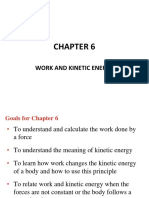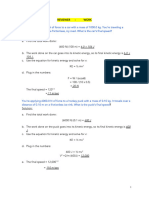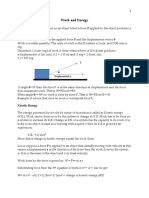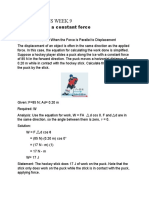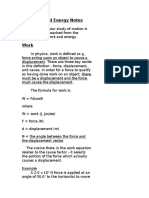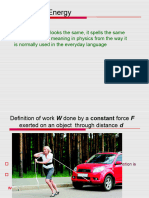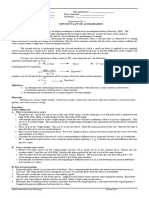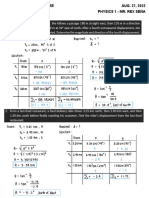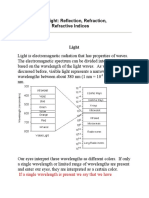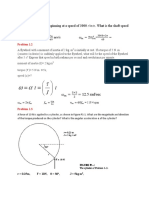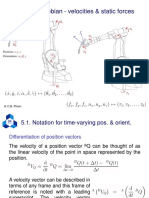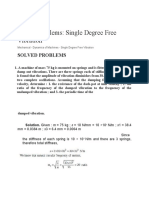0% found this document useful (0 votes)
18 views5 pagesLesson 7 Exampleproblems
The document discusses the work and work-energy theorem through various physics problems, including calculating net work, work done by forces, and the effects of friction. It also covers concepts like gravitational work, acceleration, and the potential energy of springs. Additionally, it explores the work done by varying forces and integrates to find total work done over specific distances.
Uploaded by
name is someoneCopyright
© © All Rights Reserved
We take content rights seriously. If you suspect this is your content, claim it here.
Available Formats
Download as PDF, TXT or read online on Scribd
0% found this document useful (0 votes)
18 views5 pagesLesson 7 Exampleproblems
The document discusses the work and work-energy theorem through various physics problems, including calculating net work, work done by forces, and the effects of friction. It also covers concepts like gravitational work, acceleration, and the potential energy of springs. Additionally, it explores the work done by varying forces and integrates to find total work done over specific distances.
Uploaded by
name is someoneCopyright
© © All Rights Reserved
We take content rights seriously. If you suspect this is your content, claim it here.
Available Formats
Download as PDF, TXT or read online on Scribd
/ 5


